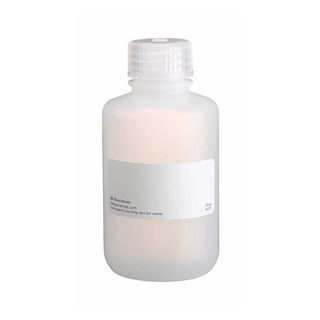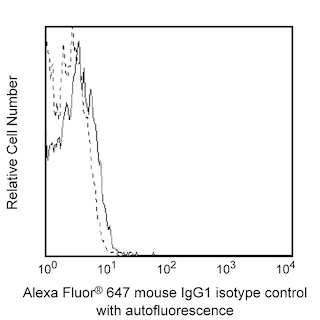-
Training
- Flow Cytometry Basic Training
-
Product-Based Training
- BD FACSDiscover™ S8 Cell Sorter Product Training
- Accuri C6 Plus Product-Based Training
- FACSAria Product Based Training
- FACSCanto Product-Based Training
- FACSLyric Product-Based Training
- FACSMelody Product-Based Training
- FACSymphony Product-Based Training
- HTS Product-Based Training
- LSRFortessa Product-Based Training
- Advanced Training
-
- BD FACSDiscover™ S8 Cell Sorter Product Training
- Accuri C6 Plus Product-Based Training
- FACSAria Product Based Training
- FACSCanto Product-Based Training
- FACSLyric Product-Based Training
- FACSMelody Product-Based Training
- FACSymphony Product-Based Training
- HTS Product-Based Training
- LSRFortessa Product-Based Training
- United States (English)
-
Change country/language
Old Browser
This page has been recently translated and is available in French now.
Looks like you're visiting us from {countryName}.
Would you like to stay on the current country site or be switched to your country?






Analysis of Nanog in human embryonic stem (ES) cells. H9 human ES cells (WiCell, Madison, WI), passage 45 grown on irradiated mouse embryonic fibroblasts, were harvested, fixed in BD Cytofix™ buffer (Cat. No. 554655), permeabilized with BD™ Phosflow Perm/Wash buffer I (Cat. No. 557885) and stained with Alexa Fluor® 647 anti-human Nanog (open histogram) or with a matching concentration of Alexa Fluor® 647 Mouse IgG1, κ Isotype Control (Cat. No.557714, shaded histogram). Flow cytometry was performed on a BD™ LSR II flow cytometry system. Triton™ X-100 (0.1%) and BD™ Phosflow Perm buffer III (Cat. No. 558050) are also suitable for permeabilization.

Immunoflourescent staining of Nanog in human embryonic stem cells. H9 cells (WiCell, Madison, WI), passage 46, grown in mTeSR™1 medium (StemCell Technologies) on BD Matrigel™ hESC-qualified Matrix (Cat. No. 354277) were fixed in BD Cytofix™ buffer (Cat. No. 554655), permeabilized using BD™ Phosflow Perm/Wash buffer I (Cat. No. 557885), and stained with Alexa Fluor® 647 anti-Human Nanog monoclonal antibody (pseudo-colored red) at 2.5 µg/mL. Cell nuclei were counter-stained with Hoechst 33342 (pseudo-colored blue). The images were captured on a BD Pathway™ 435 Cell Analyzer and merged using BD Attovision™ Software. Triton™ X-100 and BD™ Phosflow Perm buffer III (Cat. No. 558050) are also suitable for permeabilization, although the resulting images may not be as clean.


BD Pharmingen™ Alexa Fluor® 647 Mouse anti-Human Nanog

BD Pharmingen™ Alexa Fluor® 647 Mouse anti-Human Nanog

Regulatory Status Legend
Any use of products other than the permitted use without the express written authorization of Becton, Dickinson and Company is strictly prohibited.
Preparation And Storage
Recommended Assay Procedures
For Bioimaging, please refer to the protocol at http://www.bdbiosciences.com/support/resources/protocols/ceritifed_reagents.jsp
Product Notices
- This reagent has been pre-diluted for use at the recommended Volume per Test. We typically use 1 × 10^6 cells in a 100-µl experimental sample (a test).
- Please refer to www.bdbiosciences.com/us/s/resources for technical protocols.
- An isotype control should be used at the same concentration as the antibody of interest.
- Alexa Fluor® 647 fluorochrome emission is collected at the same instrument settings as for allophycocyanin (APC).
- For fluorochrome spectra and suitable instrument settings, please refer to our Multicolor Flow Cytometry web page at www.bdbiosciences.com/colors.
- The Alexa Fluor®, Pacific Blue™, and Cascade Blue® dye antibody conjugates in this product are sold under license from Molecular Probes, Inc. for research use only, excluding use in combination with microarrays, or as analyte specific reagents. The Alexa Fluor® dyes (except for Alexa Fluor® 430), Pacific Blue™ dye, and Cascade Blue® dye are covered by pending and issued patents.
- Caution: Sodium azide yields highly toxic hydrazoic acid under acidic conditions. Dilute azide compounds in running water before discarding to avoid accumulation of potentially explosive deposits in plumbing.
- Triton is a trademark of the Dow Chemical Company.
- Source of all serum proteins is from USDA inspected abattoirs located in the United States.
- Alexa Fluor® is a registered trademark of Molecular Probes, Inc., Eugene, OR.
- mTESR™1 is a trademark of StemCell Technologies.
Companion Products




The N31-355 monoclonal antibody reacts with human Nanog (named for Tir Na Nog, the land of the ever-young of Celtic mythology), which is a homeobox transcription factor required for the maintenance of the undifferentiated state of pluripotent stem cells. Nanog expression counteracts the differentiation-promoting signals induced by the extrinsic factors LIF (Leukemia Inhibitory Factor) and BMP (Bone Morphogenic Protein). When Nanog expression is down-regulated, cell differentiation can proceed. Proteins that regulate Nanog expression include transcription factors Oct4, SOX2, FoxD3, and Tcf3 and tumor suppressor p53. Nanog is one of the factors that can contribute to reprogramming of differentiated cells to an induced pluripotent stem cell state.
Development References (8)
-
Chambers I, Colby D, Robertson M, et al. Functional expression cloning of Nanog, a pluripotency sustaining factor in embryonic stem cells. Cell. 2003; 113:643-655. (Biology). View Reference
-
Chambers I. The molecular basis of pluripotency in mouse embryonic stem cells. Cloning Stem Cells. 2004; 6(4):386-391. (Biology). View Reference
-
Ezeh UI, Turek PJ, Reijo RA, Clark AT. Human embryonic stem cell genes OCT4, NANOG, STELLAR, and GDF3 are expressed in both seminoma and breast carcinoma. Cancer. 2005; 104(10):2255-2265. (Biology). View Reference
-
Mitsui K, Tokuzawa Y, Itoh H, et al. The homeoprotein Nanog is required for maintenance of pluripotency in mouse epiblast and ES cells. Cell. 2003; 113:631-642. (Biology). View Reference
-
Pan G, Thomson JA. Nanog and transcriptional networks in embryonic stem cell pluripotency. Cell Res. 2007; 17:42-49. (Biology). View Reference
-
Sun Y, Li H, Yang H, Rao MS, Zhan M. Mechanisms controlling embryonic stem cell self-renewal and differentiation. Crit Rev Eukaryot Gene Expr.. 2006; 16(3):211-231. (Biology). View Reference
-
Suzuki A, Raya A, Kawakami Y, et al. Nanog binds to Smad1 and blocks bone morphogenetic protein-induced differentiation of embryonic stem cells. Proc Natl Acad Sci U S A. 2006; 103(27):10294-10299. (Biology). View Reference
-
Yu J, Vodyanik MA, Smuga-Otto K, et al. Induced pluripotent stem cell lines derived from human somatic cells. Science. 2007; 318(5858):1917-1920. (Biology). View Reference
Please refer to Support Documents for Quality Certificates
Global - Refer to manufacturer's instructions for use and related User Manuals and Technical data sheets before using this products as described
Comparisons, where applicable, are made against older BD Technology, manual methods or are general performance claims. Comparisons are not made against non-BD technologies, unless otherwise noted.
For Research Use Only. Not for use in diagnostic or therapeutic procedures.
Report a Site Issue
This form is intended to help us improve our website experience. For other support, please visit our Contact Us page.